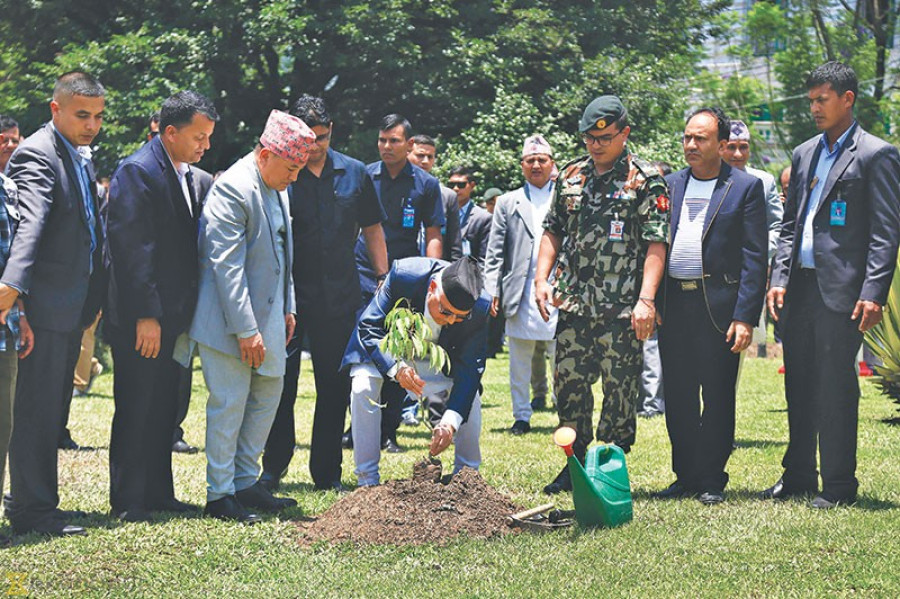National
Government to plant 50m trees next fiscal year
The government has unveiled an ambitious plan of planting 50 million trees in the fiscal year 2019-20 as part of a nationwide campaign dubbed the “Year of Plantation”.
Chandan Kumar Mandal
The government has unveiled an ambitious plan of planting 50 million trees in the fiscal year 2019-20 as part of a nationwide campaign dubbed the “Year of Plantation”.
Shakti Bahadur Basnet, minister for forest and environment, launched the plan on the occasion of International Day of Forests on Thursday.
“Declaring the upcoming fiscal year as the ‘Year of Plantation’ is a reflection of the government’s commitment of maintaining the current forest coverage,” said Basnet.
Nepal’s current forest coverage stands at 44.74 percent (roughly 6.6 million hectares) of its total area.
As part of the plantation drive, saplings will be planted in and outside forest areas.
According to the plan, fast-growing trees will be planted, with the government providing the saplings and other resources for the purpose.
“If a farmer can sustain his/her livelihood from farming and animal husbandry, the stress on forest resources will decrease. For this, agroforestry can be a suitable solution that can fulfil the needs of agriculture and forest,” said Prahlad Thapa, country representative of the International Union for Conservation of Nature.
In 1990, the country’s forest coverage was recorded at 45.5 percent, which shrank to 39.6 percent by 2000. Improved and timely conservation measures helped the country regain its forest coverage to the current state.
Bishwa Nath Oli, secretary at the Ministry of Forests and Environment,said that the country needs to find a right balance between utilisation and conservation of forest resources.
“There is no question about forests’ contribution to the country’s prosperity as a number of Sustainable Development Goals and targets are directly linked with forests. In the past, however, our education system has been largely focussed towards its conservation only. Now, the approach should also be towards utilisation of these resources while adapting scientific and sustainable forest management,” Oli said.
Unlike the global tourism scenario that shows only 30 percent of tourists are engaged in nature-based tourism, nearly 60 percent of tourists visiting Nepal visit protected forest areas of the country.
Stakeholders pointed out the importance of balance between development and conservation to tap into the potential role forests can play in the country’s overall growth.
“A section of the public is sceptical about using forest-based products believing that doing so will destroy nature, while others are concerned about these valuable products being underutilised. Without utilising these resources, our prosperity goal is merely a far-fetched dream,” Basnet said.




 11.12°C Kathmandu
11.12°C Kathmandu













%20(1).jpg&w=300&height=200)

